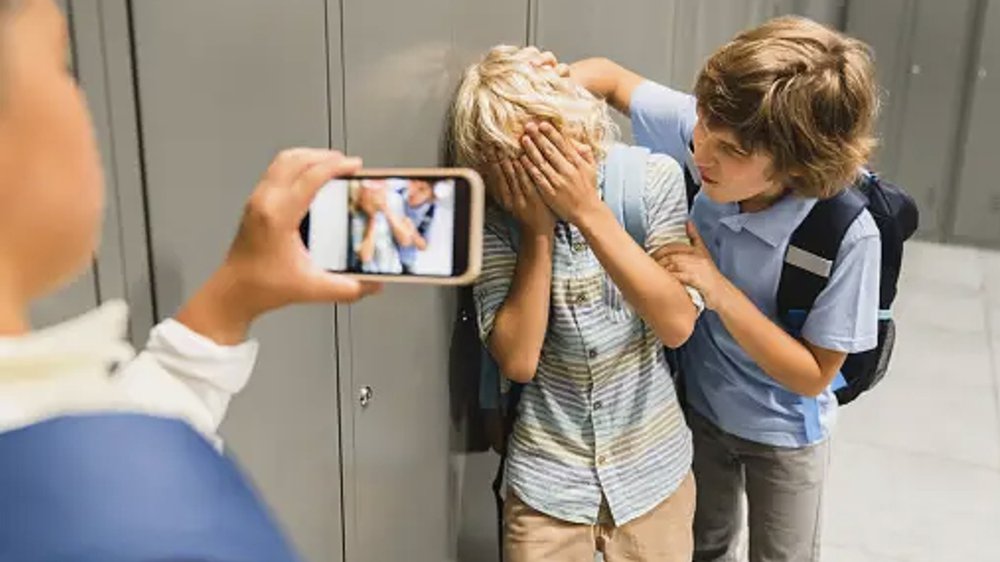Going to school should be an exciting venture for a child. After all, it’s their first approach to having social interaction with other children of their own age. It’s a chance to be original and to learn how to appreciate their individuality. Unfortunately, this is not always the case. Bullying is a social issue that affects many children and families all over the world.
Bullying can be as tame as spreading rumors about a person, teasing a child for their choices or behavior, or even more extreme physical actions. The first step to dealing with these issues is to learn more about bullying and how it works.
Bullying Explained
There are several different actions that can be cataloged as bullying. The broad definition of bullying is “intentional actions performed on an individual or group of individuals that can be tormenting for them in a physical, verbal, or psychological way.” These actions can be name-calling, shunning, or mocking–or more serious issues such as hitting, shoving, threatening, or extortion. In today’s modern world, bullying can exist both in person and online.
These actions often make the victims feel bad about themselves, lowering their self-esteem and causing real and concerning psychological issues. Bullying needs to be taken very seriously, especially when it happens to children who are building up their personalities and self-worth.
Why Do People Bully?
Sadly, the people who bully others often deal with their own pain and troubles. There’s a spectrum of possibilities that might push someone to bully others.
Common characteristics of bullying include:
● Some children feel insecure about themselves or something in their lives. This makes them more compelled to pick on someone they see as weaker to feel better about themselves.
● In some cases, bullying gives insecure children a chance to feel powerful, important, or in control of the situation they’re living in. Bullying gives them a fleeting sense of authority and popularity.
● Bullying can be the result of repeated behavior. This means that a child might treat their peers according to the treatment they receive at home. In this type of situation, the bullying seems natural for the bully since that’s all they know.
● Bullying could also result from an undiagnosed disability or disorder in the child. In this case, the child should be treated by a specialist.
Often, children who bully look for a specific kind of victim–someone who may be smaller than them, with a different cultural background, preferences, or personality.
What To Do If Your Child Is Being Bullied
It’s hard on the whole family when a child is experiencing bullying. The first step towards helping your child is to be attentive to their experiences at school and with friends. Establishing clear communication is important so your child knows they can tell you anything without fear of getting in trouble or making the situation worse.
In some cases, children might keep quiet about what’s happening to them out of fear of embarrassment. It’s important to be delicate and vigilant.
Warning signs that your child might be experiencing bullying:
● If a child is not acting normally, seems anxious, or is worried.
● The inability to sleep well or lack of appetite, especially for no apparent reason.
● Frequent bruises or injuries.
● Avoiding situations or places they feel as dangerous. A child who suddenly doesn’t want to go to school or avoids going to the park might have a good reason for it.
Encourage kids to talk about these issues and seek help when needed:
● Offer emotional support and actively listen to what your child has to say.
● Praise your child for coming to you with their problems. It’s vital that your child understand that talking to you about their concerns is the right thing to do.
● Consider your child’s opinion when looking for the best course of action to follow in dealing with bullying. It’s important not to react in a way that might make things worse for your child.
● Since all bullying situations are different, identify the main issues and look for the best approach to solving the problem. You might consider going to a specialist for guidance, like a teacher or counselor.
● If the bullying continues or escalates, and you’ve already discussed the issue with a specialist, you can try meeting with the bully’s parents. However, it’s important to do so with a mediator involved.
● If the bullying continues or intensifies after following this advice, learn more about the laws that apply to your community and consider taking legal action.
● Teach your child safe ways to deal with bullying. This could look like being surrounded by friends in places where the bullying might happen, not reciprocating the anger directed at them, ignoring the bully by walking away, and always making sure to talk about it with an adult.
How to Teach Children Not to Bully
In some cases, parents learn that their child is the one who is doing the bullying. This is a difficult situation to be in, but there are ways to intervene and tackle the issue:
● Make sure that your child knows that bullying is completely unacceptable and that continuing with that behavior will have serious consequences.
● Find the reasons behind your child’s actions. Kids often bully others because they are dealing with their own issues. Help your child manage the problem that is triggering this type of conduct.
● Teach your child how to treat others kindly by being an example. Children learn from their parents how to be respectful, kind, and empathic. It’s helpful for them to see you problem-solve and communicate with others–especially in difficult situations, like arguments, where emotions are heightened.
● Positive reinforcements are key! Share how proud you are of your child’s achievements. Highlight the things they do really well.
● Be aware of your child’s social life. Sometimes, children can be easily influenced by friends who are having problems or can be stressed by their environment.
● Bullying is a serious issue, but be sure not to make your child feel judged or labeled “bad.” Kids make mistakes, but it’s important to show them how people learn and grow from those mistakes.
Chat with a specialist if you feel overwhelmed. They won’t judge your family and can help you figure out the best plan to move forward. It’s always a good idea to talk to someone about issues like bullying, both for parents and kids. After all, communication is always key to having good mental health. It takes a whole community to raise a child!
Activities to Support Your Kids with Bullying
1. ‘Choosing different friends’
● Using two boxes or bowls, ask your child to write a label for each.
● On one label write, ‘being a good friend’ and on the other write, ‘not being a good friend.’ Put them next to the bowls.
● On pieces of paper, write down different ways people can be good friends or not good friends.
● Sort them into the correct bowls.
● Who would we most like to play with? The friends that make us feel good and happy!
● Choose to play with ‘good’ friends, these might be different friends from usual but this will encourage your child to form positive relationships.
2. ‘Stop! I don’t like it’
● Talk to your child about things that are happening that they don’t like.
● Using the phrase ‘stop, I don’t like it’ is a powerful way to assert themselves.
● Encourage children to practice this in other situations at home, with other family members, caregivers, or friends so that they get lots of practice using it. It does not need to be shouted. Practice saying it calmly, with action if needed, and then walk away.
● Remind children to speak to a grown-up for more help.
About the author

Dr. Suzanne Barchers is Chairperson at Lingokids Educational Advisory Board at Lingokids.










